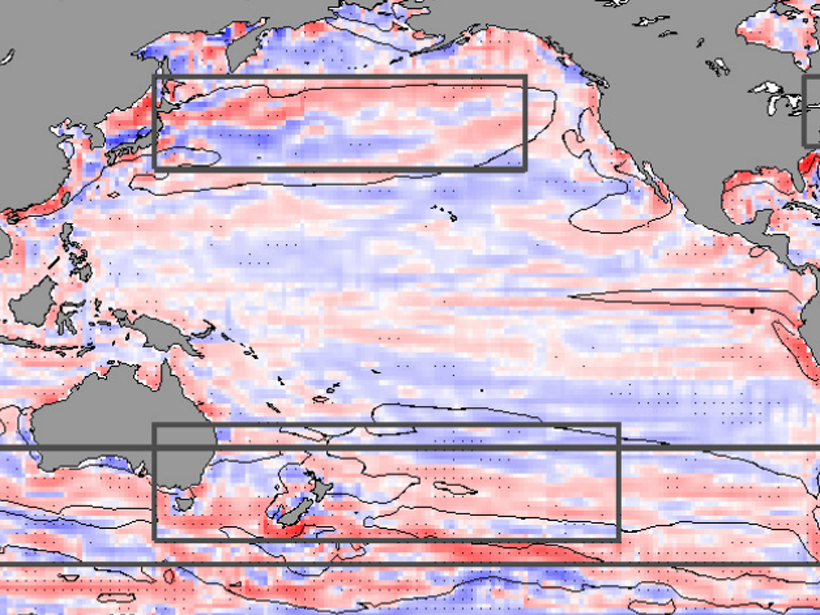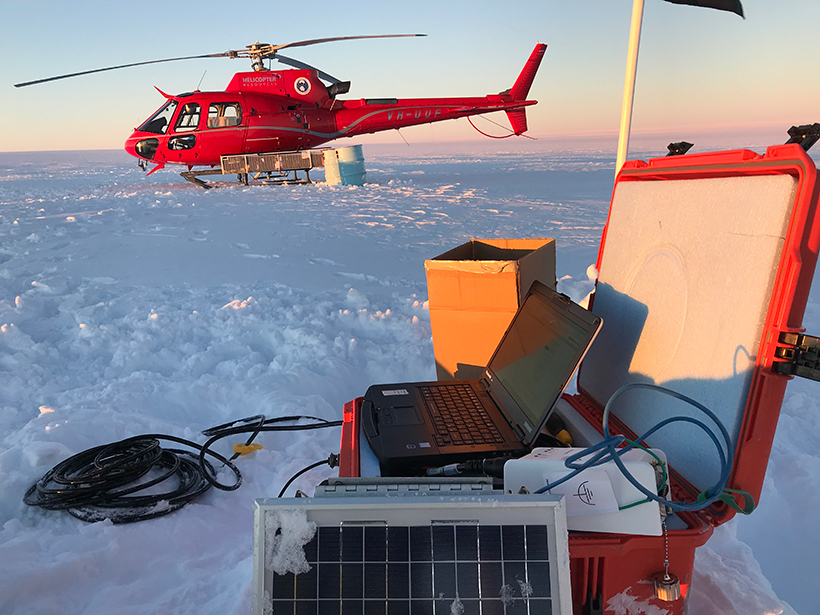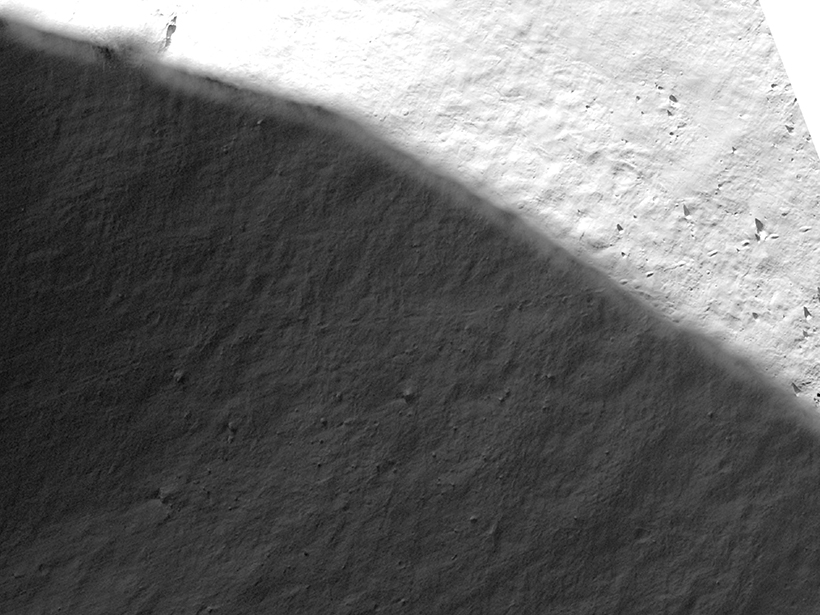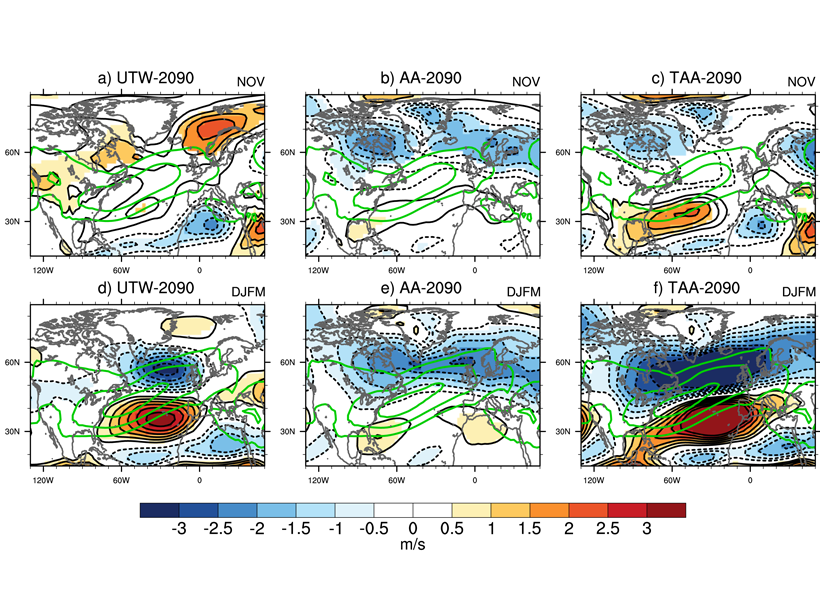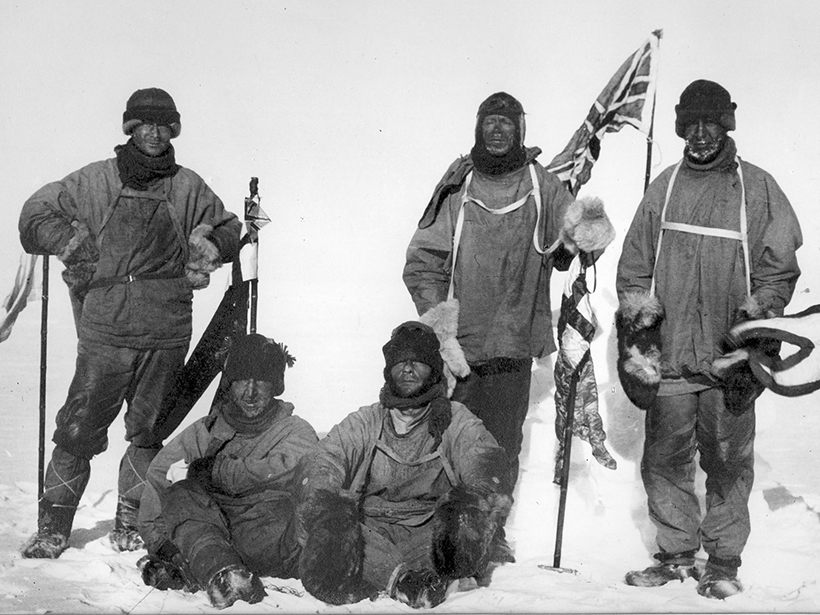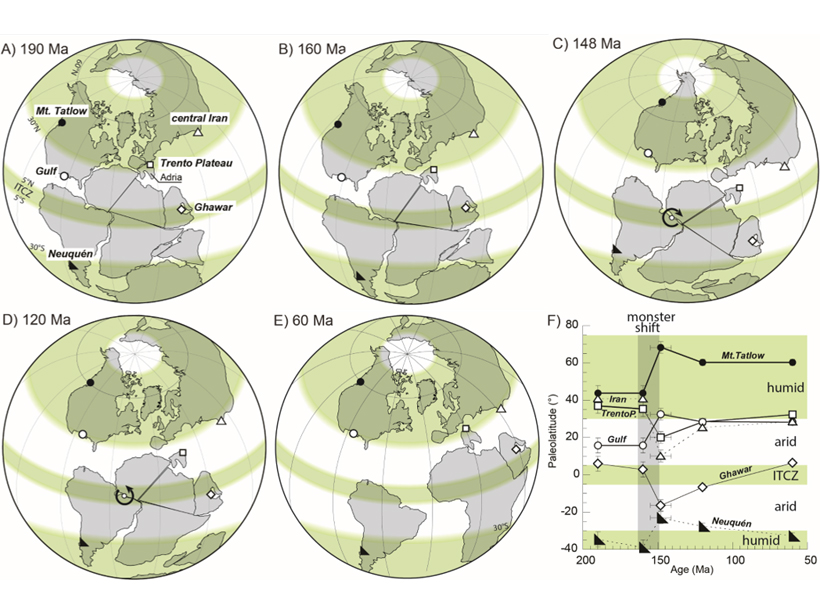Basin-wide ocean gyres have been observed to be slowly migrating toward the poles and, although natural variations contribute, climate simulations suggest the shift is in response to global warming.
poles
A Shared Resource for Studying Extreme Polar Environments
A new community pool of seismic instrumentation will facilitate and advance geologic and cryospheric research in Earth’s ice-covered environments.
Shedding Light on the Darkest Regions of the Moon
An international team of researchers is analyzing boulder tracks to learn more about some of the most elusive regions on the Moon.
New Type of Storm Spotted on Saturn
In 2018, four massive storms formed near the planet’s north pole, interacting with each other and affecting a full latitudinal band.
How Are Microplastics Transported to Polar Regions?
New modeling indicates that global subsurface ocean currents distribute submerged microplastics along very different routes than those traveled by floating plastic debris.
Polar Stratosphere Resolves North Atlantic Jet “Tug of War”
Getting the polar stratosphere right is critical in the simulation of North Atlantic climate change, which is shaped by the interaction of Arctic Amplification and tropical upper tropospheric warming.
Peeling Back the Layers of the Climate of Mars
A new study ties layers in the polar deposits of Mars to changes in climate driven by orbital variations, constraining accumulation rates and further deciphering the climate history of the Red Planet.
Paleomagnetism Indicators May Be Flawed
A new study finds that magnetism in volcanic ash tuff forms through varied processes, calling into question previously reliable signatures used to study variations in Earth’s magnetic field.
Podcast: A Tale of Two Journeys
In the latest episode of its Centennial series, AGU’s Third Pod from the Sun tells the story of two parties journeying to the South Pole in 1911 and the extraordinary impact that weather had on their travels.
Extraordinary Polar Wander During the Late Jurassic?
Small amounts of polar wander have occurred during geological history, but whether larger amounts occurred is still controversial. Did a truly large polar wander event really happen?

